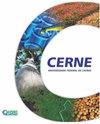SOIL CHEMICAL CHANGES AND RESEMBLANCES IN A CHRONOSEQUENCE RAINFOREST-SUGARCANE-PASTURELAND IN THE ATLANTIC FOREST BIOME
IF 0.7
4区 农林科学
Q3 FORESTRY
引用次数: 1
Abstract
This study evaluated soil chemical and isotopic changes in soils of a chronosequence rainforest-sugarcane-pasture in the Atlantic Forest biome, Brazil. Soil samples were collected (0-20 cm) in areas of native Brazilian Atlantic rainforest, sugarcane plantation and pastures of Brachiaria decumbens. The soil analyses performed were: pH (water 1:2.5), P (Mehlich-I), (Al+3, H+Al, K+, Ca+2, Mg+2 and Na+), soil organic matter (SOM), N, organic carbon and δ13C and δ15N stable isotopes. The conversion of rainforest to sugarcane and pastures resulted in a reduction of the soil natural acidity. Forest areas had greater Al+3 and H+Al concentrations than cultivated areas. The conversion from forest to agricultural soil reduced Al+3 (44%) and H+Al (11%), approximately. Soils from pasture had a greater percentage of base saturation (37.3%) than forest soils (25.4%). Cation exchange capacity was strongly influenced by concentrations of K+, Ca+2 and Mg+2, but not by Na+. Carbon stable isotope (δ13C) was more depleted in forest areas (-28.14‰), followed by sugarcane (-21.33‰), and pastures (-19.54‰). The greatest δ15N values were found in sugarcane areas. The short chronosequence studied, had a strong influence of the conversion of the forest on the decrease of the natural acidity and modifications of the isotopic profile. The enrichment of soil δ13C was attributed to the changes from predominant C3 vegetation to C4 grasses. 1Universidade Federal Rural de Pernambuco, Department of Animal Science, Brazil. ORCID: 0000-0003-1787-3871a, 0000-0003-1570-9461b, 0000-0002-1316-3218c, 0000-0002-4721-9021d, 0000-0002-7374-0910e 2North Florida Research and Education Center, Marianna, FL, United States of America. ORCID: 0000-0001-82699959a, 0000-0002-6781-0513b大西洋森林生物群系中热带雨林-甘蔗-牧场的土壤化学变化及其相似性
本研究评估了巴西大西洋森林生物群系中热带雨林-甘蔗-牧场的土壤化学和同位素变化。在巴西大西洋原生雨林、甘蔗种植区和卧卧臂蒿牧场采集0 ~ 20 cm土壤样品。土壤分析包括:pH(水1:25 .5)、P (Mehlich-I)、(Al+3、H+Al、K+、Ca+2、Mg+2和Na+)、土壤有机质(SOM)、N、有机碳和δ13C和δ15N稳定同位素。雨林向甘蔗和牧场的转变导致了土壤自然酸度的降低。森林地区的Al+3和H+Al浓度高于耕地地区。从森林到农业土壤的转化减少了大约44%的Al+3和11%的H+Al。牧场土壤的碱基饱和度(37.3%)高于森林土壤(25.4%)。阳离子交换容量受K+、Ca+2和Mg+2浓度的强烈影响,而不受Na+的影响。碳稳定同位素δ13C (δ13C)在森林中损耗最大(-28.14‰),其次是甘蔗(-21.33‰)和牧场(-19.54‰)。甘蔗区δ15N值最大。研究的短时间序列表明,森林的转换对自然酸度的降低和同位素剖面的改变有很强的影响。土壤δ13C的富集与C3植被为主向C4禾草为主的变化有关。1伯南布哥联邦农村大学动物科学系,巴西;ORCID: 0000-0003-1787-3871a, 0000-0003-1570-9461b, 0000-0002-1316-3218c, 0000-0002-4721-9021d, 0000-0002-7374-0910e 2北佛罗里达州研究与教育中心,美国佛罗里达州Marianna。ORCID: 0000-0001-82699959a, 0000-0002-6781-0513b
本文章由计算机程序翻译,如有差异,请以英文原文为准。
求助全文
约1分钟内获得全文
求助全文
来源期刊

Cerne
农林科学-林学
CiteScore
1.60
自引率
0.00%
发文量
2
审稿时长
6-12 weeks
期刊介绍:
Cerne is a journal edited by the Federal University of Lavras, Minas Gerais state, Brazil, which quarterly publishes original articles that represent relevant contribution to Forestry Science development (Forest ecology, Forest Management, Silviculture, Technology of Forest Products).
 求助内容:
求助内容: 应助结果提醒方式:
应助结果提醒方式:


